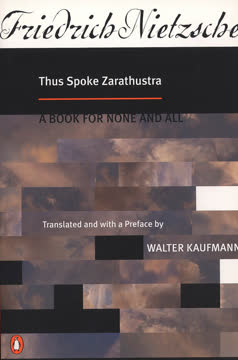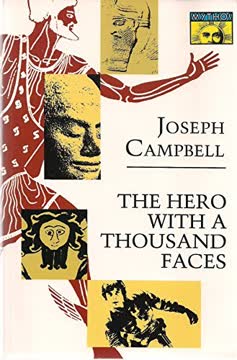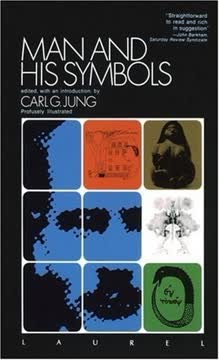重点摘要
1. 童年经历塑造我们的心理基础
“我仍然完全沉浸在童年的世界中。随着我逐渐长大,这个世界变得越来越令人质疑,几乎难以忍受。”
早期影响。 荣格的童年充满了生动的经历和遭遇,这些经历为他后来的心理学理论奠定了基础。他的早年生活充满了强烈的梦境、幻象以及对超越普通世界的某种联系的感觉。这些经历,常常令人困惑,有时甚至令人恐惧,激发了他对人类心理及其隐藏深处的深刻好奇心。
形成性事件。 荣格童年时期的几个关键事件对他的心理发展产生了持久的影响:
- 地下阳具的梦,引导他认识到无意识的概念
- 他在阁楼里创造并隐藏的雕刻小人,代表了他秘密的内心世界
- 他对宗教和灵性的体验,这些体验既让他着迷又让他困扰
这些早期与心理神秘方面的接触,使荣格踏上了一生的探索和发现之旅,塑造了他独特的理解人类心灵的方法。
2. 无意识通过梦境和幻象进行交流
“无意识通过向我们传达信息或做出比喻性暗示来帮助我们。它还有其他方式告知我们那些按逻辑我们不可能知道的事情。”
梦的解析。 荣格认为,梦不仅仅是神经元的随机放电,而是来自无意识心灵的有意义的交流。他开发了分析和解释梦境的技术,将其视为通向心理深层的窗口。通过仔细检查梦的符号和叙述,荣格发现无意识常常提供指导、警告和洞见,这些是有意识的心灵无法直接获取的。
幻象体验。 在他的一生中,荣格经历了许多幻象,这些幻象对他的工作产生了深远的影响:
- 上帝在巴塞尔大教堂上排便的幻象,挑战了他的宗教信仰
- 多层房子的梦,代表了心理的不同层次
- 心脏病发作期间的濒死体验,让他瞥见了来世
这些经历使荣格确信无意识心灵的现实和重要性,促使他开发了与这些心理深层方面互动并将其整合到有意识生活中的方法。
3. 面对阴影对个人成长至关重要
“一个人不会通过想象光明的形象而变得开悟,而是通过使黑暗变得有意识。”
阴影概念。 荣格提出了“阴影”的概念,指的是我们倾向于压抑或否认的隐藏的、通常是负面的个性方面。他认为,面对和整合这些阴影元素对心理健康和个人发展至关重要。阴影不仅包含我们较黑暗的冲动,还包含未实现的潜力和创造力。
整合过程。 面对阴影包括:
- 承认和接受自己不太理想的方面
- 认识到自己将阴影投射到他人身上
- 将阴影的能量和潜力整合到有意识的生活中
荣格强调,这个过程虽然常常困难且令人不适,但对实现心理完整性和真实性至关重要。通过拥抱我们本性中的光明和黑暗方面,我们可以实现更平衡和完整的自我。
4. 原型和集体无意识影响人类行为
“原型是心理的神圣结构元素,具有一定的自主性和特定的能量,使它们能够从有意识心灵中吸引最适合自己的内容。”
集体无意识。 荣格提出了集体无意识的存在,这是所有人类共享的心理层次,包含称为原型的普遍模式和符号。这些原型,如母亲、英雄和智者,塑造了我们的经历和行为,尽管我们可能没有意识到。
原型的影响。 原型以各种方式表现出来:
- 在梦境和幻象中
- 通过文化神话和传说
- 在艺术和文学中
- 在个人和集体的人类行为中
理解原型可以提供对人类动机、文化模式和个体心理发展的洞见。荣格认为,认识和利用原型能量可以带来更深的自我理解和个人成长。
5. 有意识和无意识元素的整合导致个体化
“个体化意味着成为一个‘个体’,而在‘个体性’包含我们最内在、最后和无可比拟的独特性方面,它也意味着成为自己的自我。”
个体化过程。 荣格将个体化视为人类心理发展的核心目标。这个过程涉及整合心理的各个方面,包括有意识和无意识的,以实现一种完整和自我实现的状态。个体化不是关于变得完美,而是关于更充分地成为自己。
个体化的步骤:
- 认识和面对阴影
- 整合阿尼玛/阿尼姆斯(心理的异性方面)
- 与其他原型人物互动
- 建立与自我的关系(整体性的原型)
荣格强调,个体化是一个终生的旅程,而不是一个目的地。它需要持续的努力、自我反省以及愿意面对自己未知的方面。
6. 共时性揭示了超越因果关系的有意义联系
“共时性揭示了两个或多个事件的有意义的巧合,其中涉及的不是概率的偶然性。”
非因果联系。 荣格引入了共时性的概念,用以描述无法通过因果关系解释的有意义的巧合。他认为这些事件揭示了宇宙中的更深层次的秩序,将物质世界与心理领域联系起来。
例子和意义:
- 荣格在治疗过程中遇到的圣甲虫经历
- 预知梦和幻象
- 似乎引导人生道路的有意义的“意外”
共时性挑战了纯粹的唯物主义世界观,暗示了一个更为互联和神秘的宇宙。荣格将这些经历视为理性与神秘之间的潜在桥梁,提供了超越我们普通理解的现实的瞥见。
7. 东方和西方的观点对心理有互补的看法
“西方人似乎主要是外向的,东方人主要是内向的。前者将意义投射到外物上,认为意义存在于物体中;后者在自己内心感受意义。但意义既在外也在内。”
文化综合。 荣格对东方哲学和灵性深感兴趣,认为其中有宝贵的见解可以补充西方的心理学方法。他认识到东方传统往往对内心世界和探索意识的技术有更为发达的理解。
关键比较:
- 西方注重自我发展 vs. 东方强调自我超越
- 西方的线性时间观 vs. 东方的循环时间观
- 西方追求外在目标 vs. 东方培养内在状态
荣格认为,整合东方和西方的观点可以带来对人类心理的更全面理解,并提供新的心理治疗和成长方法。
8. 死后生活的概念反映了心理现实
“我现在要告诉你的,我既不认为是科学事实,也不认为是哲学体系,而只是一个经验的故事。”
心理连续性。 荣格对死后生活的问题的探讨不是作为一种字面上的信仰,而是作为一种影响我们生活的心理现实。他认为来世的概念反映了心理寻求超越个体存在的连续性和意义的倾向。
经验证据:
- 濒死体验和幻象
- 梦境和已故者的幻象
- 对来世信仰的心理影响
虽然荣格对死后生活的字面真相持怀疑态度,但他认为,接触这些想法可以带来深刻的心理洞见和个人转变。他强调在充分活在当下的同时,保持对超越我们当前理解的神秘事物的开放态度的重要性。
9. 神话和宗教是人类心理的表达
“宗教是与独立于和超越意识的心理过程的一个重要联系,在心理的黑暗后方。”
心理解释。 荣格将神话和宗教符号视为人类心理的深刻表达,而不仅仅是迷信。他认为这些故事和图像反映了普遍的心理真理,并为个体提供了与自己更深层次联系的途径。
神话主题:
- 创造和毁灭的神话
- 英雄之旅的叙述
- 神圣人物作为原型能量的代表
通过心理学的视角重新解释宗教和神话材料,荣格提供了一种与这些传统互动的方法,这种方法既与现代科学理解兼容,又保留了其情感和精神力量。
10. 科学探究和精神探索可以共存
“科学是西方心灵的工具,通过它可以打开比徒手更多的门。它是我们知识的一部分,只有当它认为自己提供的理解是唯一的理解时,才会遮蔽我们的洞察力。”
综合方法。 荣格试图弥合科学理性和精神体验之间的鸿沟,认为两者对全面理解人类心理都是必不可少的。他发展了分析心理学,作为一种科学方法,同时也能容纳人类体验中的神秘和神圣方面。
平衡视角:
- 经验观察和严格分析
- 对主观体验和直觉的开放
- 认识到理性理解的局限性
荣格的工作表明,在探索心理深处,包括其精神维度时,保持科学完整性是可能的。他鼓励一种整体的方法,既重视客观知识又重视主观洞见,以追求心理真理。
最后更新日期:
FAQ
What's Memories, Dreams, Reflections about?
- Autobiographical Account: The book is an autobiographical exploration of C.G. Jung's life, thoughts, and experiences, recorded and edited by Aniela Jaffé. It covers his early years, education, and development as a psychologist.
- Inner Experiences: Jung emphasizes the importance of inner experiences, dreams, and visions over external events, highlighting moments when the "imperishable world erupted into this transitory one."
- Psychological Theories: The narrative delves into Jung's theories on the psyche, the unconscious, and the interplay between personal and collective experiences, offering a profound exploration of human consciousness.
Why should I read Memories, Dreams, Reflections?
- Understanding Jung's Legacy: The book provides insight into the foundational ideas of analytical psychology and Jung's contributions to psychology and spirituality, highlighting their relevance today.
- Personal Growth: Jung's reflections on his life and struggles offer perspectives on self-discovery and the importance of understanding one's inner world.
- Cultural and Symbolic Richness: It is rich in symbolism and mythological references, deepening the reader's understanding of the human experience and the collective unconscious.
What are the key takeaways of Memories, Dreams, Reflections?
- Unconscious Importance: Jung emphasizes the unconscious's crucial role in shaping our lives, describing his life as a story of the self-realization of the unconscious.
- Integration of Opposites: The book discusses the necessity of integrating different aspects of the self, including the conscious and unconscious, to achieve wholeness.
- Spiritual Insights: Jung explores his relationship with religion and spirituality, offering a unique perspective that challenges traditional views.
What are the best quotes from Memories, Dreams, Reflections and what do they mean?
- "A book of mine is always a matter of fate.": This reflects Jung's belief that his writings are deeply connected to his personal journey and the collective human experience.
- "We are a psychic process which we do not control.": Jung highlights the complexity of the psyche and the extent to which it influences our thoughts and actions.
- "The only question is whether what I tell is my fable, my truth.": Jung emphasizes the subjective nature of autobiography and the importance of personal truth.
What is Jung's view on dreams in Memories, Dreams, Reflections?
- Inner Guidance: Jung views dreams as vital messages from the unconscious that can guide personal development, revealing hidden aspects of the self.
- Symbolic Language: Dreams communicate through symbols, requiring interpretation to uncover their meanings, described as "a little hidden door in the innermost and most secret recesses of the soul."
- Therapeutic Value: Analyzing dreams can lead to greater self-awareness and healing, a practice Jung often used in therapy.
How does Jung describe his childhood experiences in Memories, Dreams, Reflections?
- Vivid Memories: Jung recounts various memories from his early years, highlighting their emotional significance and impact on his psyche.
- Parental Influence: He reflects on family dynamics, particularly his relationship with his parents, which influenced his views on love and trust.
- Connection to Nature: Jung expresses a deep connection to nature, seeing it as a source of inspiration and insight.
What role does religion play in Memories, Dreams, Reflections?
- Spiritual Journey: Jung discusses his evolving relationship with religion, particularly Christianity, and how it shaped his understanding of the psyche.
- God and the Unconscious: He explores the concept of God as a psychological reality, suggesting that the divine is intertwined with the unconscious.
- Critique of Traditional Views: Jung critiques conventional religious beliefs, emphasizing the importance of personal experience in understanding the divine.
How does Jung's relationship with Freud influence Memories, Dreams, Reflections?
- Intellectual Partnership: Jung describes his initial admiration for Freud and their collaborative work in developing psychoanalysis.
- Theoretical Divergence: Over time, Jung's views diverged from Freud's, particularly regarding the nature of the unconscious and the role of spirituality.
- Impact on Career: The split with Freud marked a significant turning point in Jung's career, leading him to develop his own theories.
What is Jung's concept of the "Self" in Memories, Dreams, Reflections?
- Wholeness and Integration: Jung defines the "Self" as the totality of the psyche, encompassing both conscious and unconscious elements.
- Archetypal Symbol: The "Self" is often represented by symbols such as the mandala, signifying unity and harmony.
- Path to Individuation: The journey towards realizing the "Self" is called individuation, crucial for achieving psychological health and fulfillment.
What is the concept of the collective unconscious in Memories, Dreams, Reflections?
- Universal Structure: Jung defines the collective unconscious as a part of the unconscious mind shared among all humans, containing archetypes and universal symbols.
- Archetypes' Role: These archetypes shape human experiences and manifest in myths, dreams, and cultural narratives.
- Cultural Significance: Understanding the collective unconscious helps individuals connect with their cultural heritage and shared human experiences.
How does Jung contrast Eastern and Western spirituality in Memories, Dreams, Reflections?
- Different Approaches: Jung notes that Western morality often views good and evil as separate, while Eastern traditions see them as interconnected.
- Meditation vs. Action: Eastern spirituality emphasizes meditation and inner peace, while Western traditions focus more on moral action.
- Nirdvandva Concept: Jung discusses the Indian concept of nirdvandva, or liberation from opposites, contrasting it with Western moral perfection.
How does Jung's personal journey influence his theories in Memories, Dreams, Reflections?
- Life Experiences: Jung's travels and cultural encounters shape his understanding of psychology and spirituality.
- Dream Analysis: His own dreams play a crucial role in his psychological development and theories.
- Cultural Integration: Jung's commitment to integrating Eastern and Western philosophies enriches his psychological framework.
评论
《回忆、梦、反思》因其对荣格生活和理论的深刻个人见解而备受赞誉。读者们欣赏荣格的诚实、智力好奇心和独特的心理学方法。许多人认为这本书引人入胜且改变人生,特别是关于童年、梦境和无意识探索的部分。有些人对荣格的神秘经历和非传统思想感到困惑。这本书被视为了解荣格作品的极佳入门书,提供了一个洞察他思想和心理学概念发展的窗口。
Similar Books























